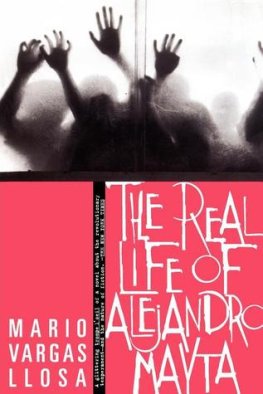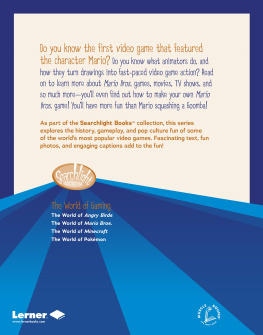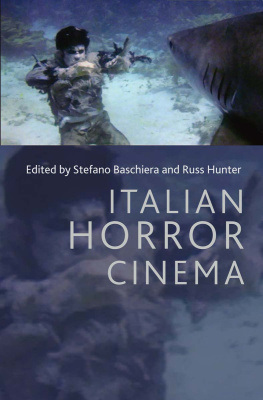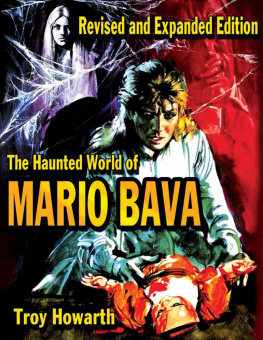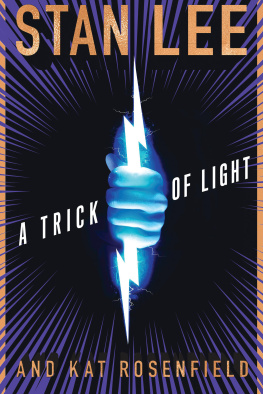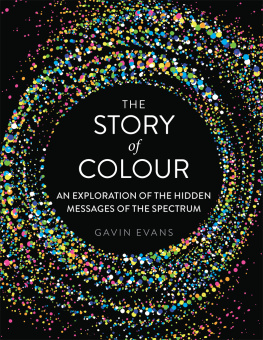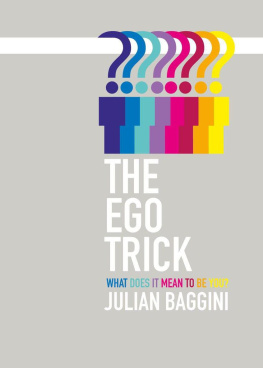MARIO BAVA
Destination Terror
Howard Hughes
MARIO BAVA: Destination Terror
Titles Coming Soon:
Dario Argento
Edgar Allan Poe
Jesus Franco
Also by Howard Hughes :
Cinema Italiano: The Complete Guide from Classics to Cult
Once Upon a Time in the Italian West: The Filmgoers Guide to Spaghetti Westerns
Stagecoach to Tombstone: The Filmgoers Guide to the Great Westerns
Crime Wave: The Filmgoers Guide to the Great Crime Movies
When Eagles Dared: The Filmgoers History of World War II
Aim for the Heart: The Films of Clint Eastwood
The Kamera Guide to Spaghetti Westerns
CONTENTS
Abracadaver: The Magic of Mario Bava
Mario Bava Filmography
I Vampiri (1957), Caltiki, The Immortal Monster (1959), The Mask of Satan/Black Sunday (1960), Hercules in the Centre of the Earth/Hercules in the Haunted World (1961), Erik the Conqueror (1961), The Girl who Knew Too Much/Evil Eye (1963), Black Sabbath (1963), The Whip and the Body (1963), Blood and Black Lace (1964), The Road to Fort Alamo (1964), Planet of the Vampires (1965), Savage Gringo (1966), Kill, BabyKill! (1966), Knives of the Avenger (1966), Dr. Goldfoot and the Girl Bombs (1966), Danger: Diabolik (1968), Hatchet for the Honeymoon (1969), Four Times that Night (1968/72), Five Dolls for an August Moon (1970), Roy Colt & Winchester Jack (1970), A Bay of Blood/Twitch of the Death Nerve (1971), Baron Blood (1972), Lisa and the Devil (1973), The House of Exorcism (1975), Shock (1977)
Appendix 1: Further Bava Filmography
Ulysses (1954), Neros Weekend (1955), Hercules (1958), The Day the Sky Exploded (1958), Hercules Unchained (1959), Sign of the Gladiator (1959), The White Warrior (1959), The Giant of Marathon (1959), Son of Samson (1960), Esther and the King (1960), The Giants of Thessaly (1961), Last of the Vikings (1961), The Wonders of Aladdin (1961), Rabid Dogs (1974), Moses the Lawgiver (1975), La Venere dIlle (1978), Inferno (1980)
Appendix 2: Bava Books & Films
Best of Bava
Acknowledgements
ABRACADAVER: The Magic of Mario Bava
Do not believe in what you think you see. Creeping mist, the milky fog of terror that can obscure untold dangers and shroud the confines of limited studio sets. Splashes of colour purple, blue, green, deep red a spectral spectrum, flooding the spaces between the darkness. Do you believe in ghosts? You must admit that there are things that frighten us. Whats that strange shadow on the wall, or that flickering candle in the derelict crypt? Is it a trick of the light, or a trick of your imagination? That old castle perched on the cliff looks real, but it could simply be a photograph. And those hundreds of extras. A multiple-exposure? In the illusory world of cinema, would you like to learn what is real and what is unreal? Come closer please, Ive something to tell you. Ladies and gentlemen, this is Mario Bava.
Director, cinematographer and special effects technician Mario Bava is best known for his imaginative horror films. He was one of the great Italian directors and a craftsman of the highest order. A maestro of the macabre and of resourcefulness over resources, he remains massively influential and peerless in his visual style. His finest work, including The Mask of Satan (1960 also called Black Sunday ), Hercules in the Centre of the Earth (1961), Blood and Black Lace (1964), Kill, Baby Kill! (1966), Danger Diabolik (1968)and A Bay of Blood (1971 aka Twitch of the Death Nerve ) are landmarks in their fields. Bavas critics label his films as style over content, while his champions trumpet his triumph over shoestring budgets, dubbing his colourful, imaginative approach Bavaesque. His painterly dabs of genius make his films unmistakable. His signature is unique, his cinematic brush strokes obvious and singular.
Modest Ambitions: The Early Years
Mario Bava was born on 31 July 1914 in the town of San Remo, on the Italian Rivieras Mediterranean coast. He was the son of Eugenio Bava, the father of Italian special effects, from whom he inherited his great talent and special effect devices, such as a waterglass effect, which created a rippling, distorted image for use in flashbacks or delusional moments of hallucination. Eugenio Bava was born in 1886 and was present at the dawn of Italian cinema, working as a cinematographer on Quo Vadis (1913) and also as a special effects technician on the silent spectacle Cabiria (1914). Mario describes him something of an Archimedes, whose little inventions became what is now known as special effects. Mario trained to be a painter, but ended up following his father into the film business. When Mario became a director himself in the 1960s, Eugenio was often on set as moral support, but not to impart technical advice, though he did make the bronze mask for The Mask of Satan. Eugenio died aged 80, on 23 October 1966.
Mario initially earned money at Romes film academy, the Instituto Luce, where in the 1930s he would create opening credits for imported American films. Amongst his assignments, he designed the opening and closing title cards for Carmine Gallones Scipio Africanus (1937), a powerful piece of fascist propaganda dressed up as a costume epic. In 1939 Bava took a chance and became an assistant cameraman to the cinematographer Massimo Terzano. Bava worked on films directed by Roberto Rossellini and Roberto De Robertis, and following the Second World War continued to work for directors such as Pietro Francisci, Mario Costa, Duilio Coletti, Luigi Comencini, Mario Soldati, Mario Monicelli and Steno (Stefano Vanzina) into the 1950s, as the Italian film industry got back on its feet following the devastation of the war years. Among the films Bava worked on during this period was the Tot comedy Cops and Robbers (1951) and Gina Lollobrigida vehicles such as Miss Italia (1950 My Beautiful Daughter ), A Dogs Life (1950) and Beautiful but Dangerous (1955). At the time, Italy was garnering international recognition for Neorealism, but Bava wasnt interested in the grainy everyday life of the movement. In an interview published in 1979, Bava noted: To me, shooting a film means tricks, inventions, magic. When I think about Neorealism, I cant help but laugh: that wasnt much of an effort, was it? You just have to walk along a street and shoot! His favourite films by other directors were Lewis Milestones First World War drama All Quiet on the Western Front (1930) and the films of Charlie Chaplin, and his favourite writer was H. P. Lovecraft. But he was resigned to the fact that the authors fantastical imagery could never be brought convincingly to the screen.
One area in which Mario Bava excelled was in his work on epics and spectacles. The Italian film industry had been making sword and sandal epics since the silents that Eugenio had worked on. In the 1950s the genre again rose to prominence, due in no small part to Bavas involvement. 1950s examples of the genre include Riccardo Fredas Spartacus the Gladiator (1953 Sins of Rome ) and Theodora, Slave Empress (1954), Pietro Franciscis La regina di Saba (1952 The Queen of Sheba ) and Attila the Hun (1954), Mario Camerinis Ulysses (1954) and Guido Brignones Le schiava di Cartagine (1956 The Sword and the Cross ). Bava worked on some of these films for example Theodora, Attila and Ulysses without credit. In addition to his camera expertise, he was capable of great visual effects ingenuity, which made him an invaluable asset to these productions. Bavas created mattes, which were essentially paintings that depicted sets or landscapes on pieces of glass. The actors could then be combined with the paintings, to create a single image. Attila , which told of the story of the Scourge of God Hun chieftains invasion of Italy, was particularly notable for some magnificent Technicolor matte paintings of the Hun and Roman camps, the city of Ravenna, and the battle lines before the films climactic engagement. It also included vivid blue lighting effects in the Huns grotto. The cast featured big names (Anthony Quinn, Sophia Loren, Irene Papas and Ettore Manni) and was directed by Pietro Francisci, with a score by Enzo Masetti. Italian sword and sandal spectacles were christened pepla (singular peplum) by French critics, after the Greek word peplos, the short skirts worn by the heroes. There were many different variations on mythological and historical pepla, including comedy pepla, action pepla, romantic pepla and horror pepla. Bava provided the lighting and special effects on Pietro Franciscis hits Hercules (1958) and Hercules Unchained (1959), starring Steve Reeves and Sylva Koscina. Both these films were huge successes, not just in Italy and Europe, but internationally too. The films are credited with beginning the craze for sword and sandal epics which made many bodybuilders stars in the early 1960s, until spy films, horror movies and spaghetti westerns overtook them in popularity. In the same period, Romes studios, dubbed Hollywood on the Tiber, were used by American filmmakers as the base of operations for such epics as Quo Vadis (1951), Helen of Troy (1955), Ben-Hur (1959) and Cleopatra (1963).
Next page



